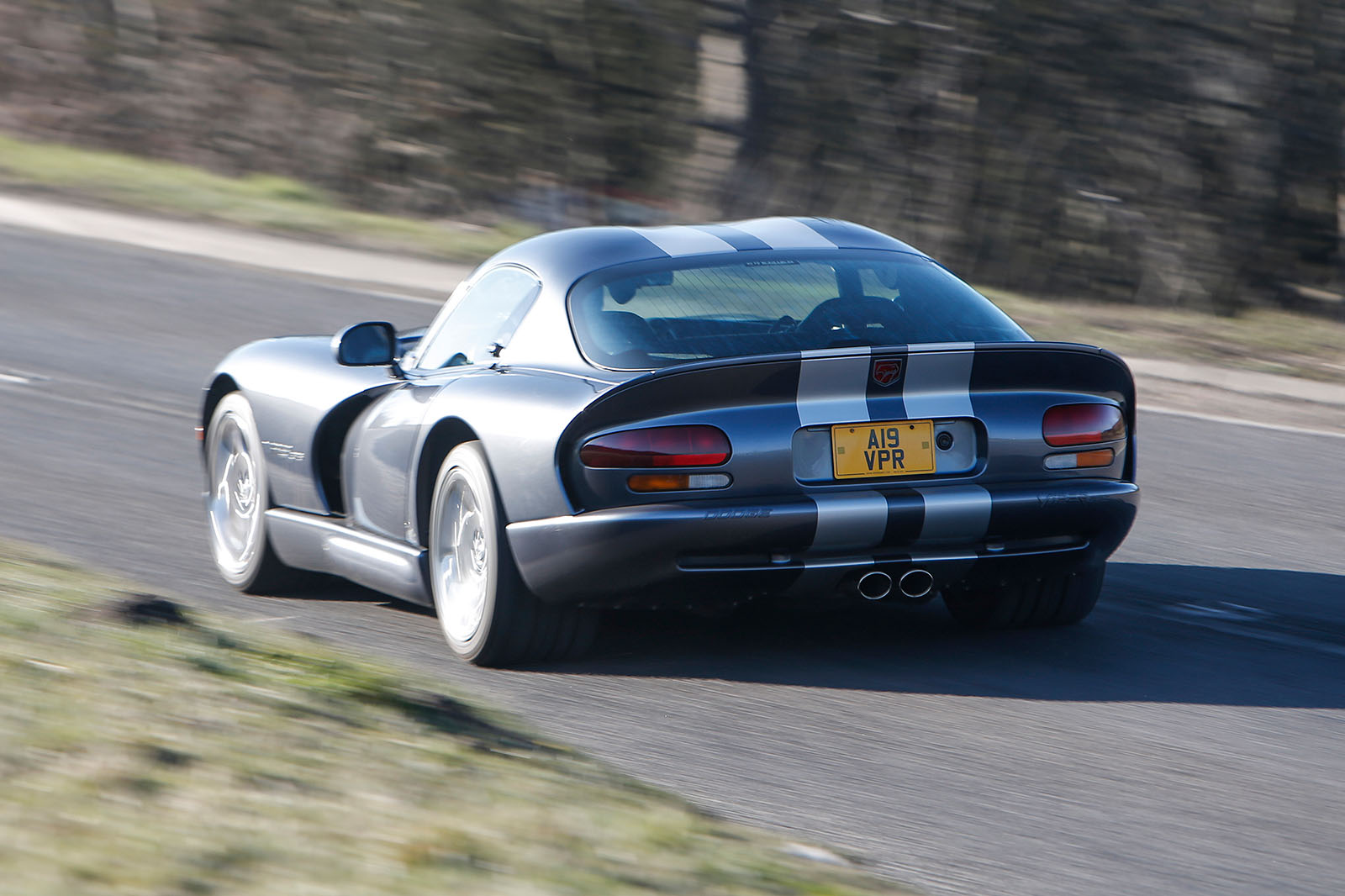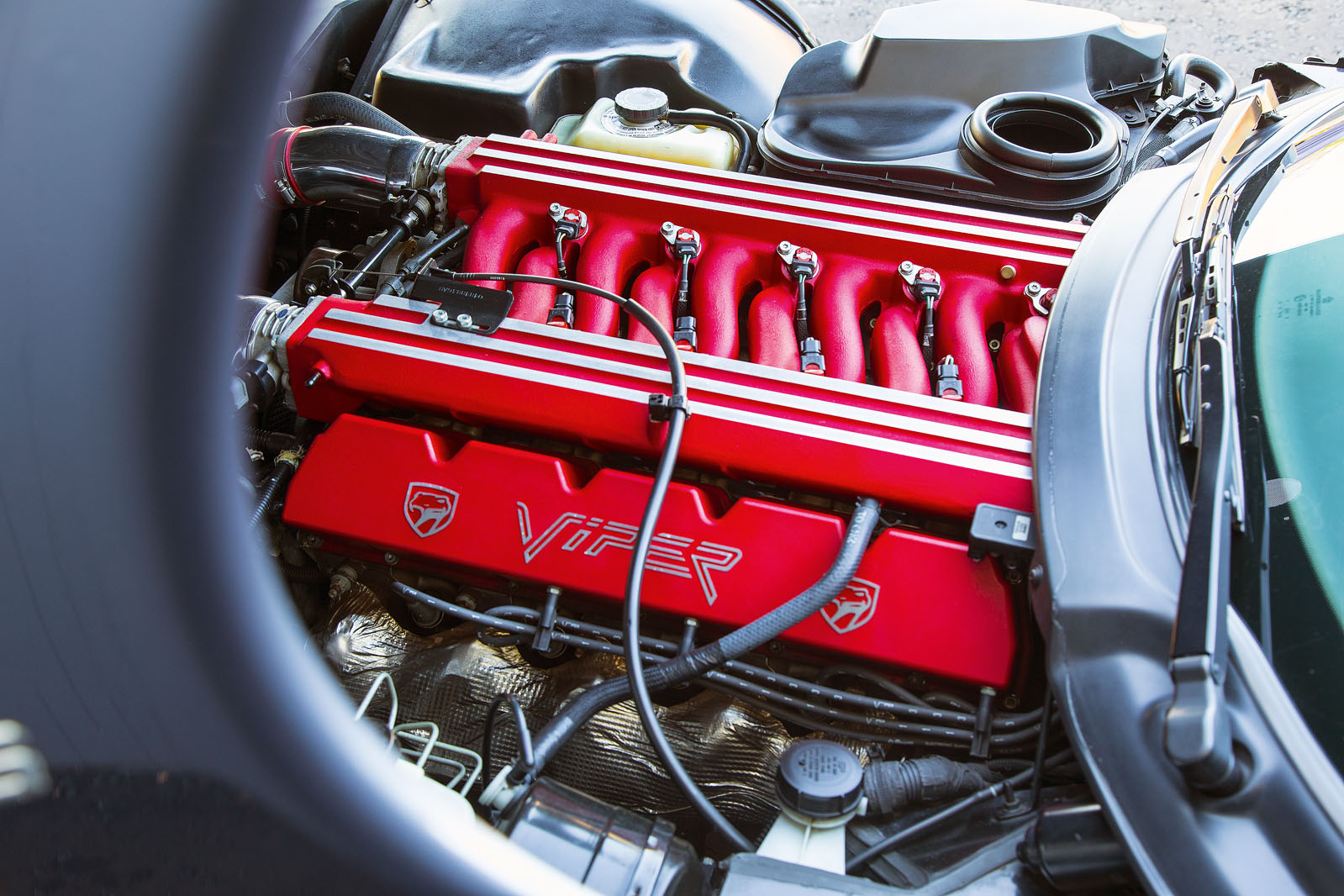“Pull for emergency exit,” says the oversized catch on the door.
It’s winter, there’s patchy black ice on the West Sussex lanes we’re driving along and said catch is attached to a Dodge Viper GTS – not exactly a paragon of clinical precision.
It is my fervent hope that I don’t have to use the catch, but it’s not a bad idea to keep its location in mind. The Viper has always been a hero car for me. Forgive the straight lift from the motoring hack’s book of cliché, but I really did have a poster of one on my bedroom wall when I was a whippersnapper.
That poster was most likely of the earlier and original RT/10 model, which was launched in 1992. That makes the Viper 25 years old this year, and that seems like the perfect excuse to revisit this glowering hunk of American excess.
Those first Vipers were production versions of a concept car first unveiled in 1989 at the Detroit show. It took three years for engineers to bring the concept to life.
The original plan was for the Viper to use an evolution of the LA360 V8 with, in effect, two extra cylinders grafted on. The engine was also destined for use in Dodge’s Ram line of trucks.

But a series of refinements by Lamborghini, then part-owned by Dodge’s parent company Chrysler, resulted in the engine projects growing apart, with the biggest change of all being the switch from a cast iron block to an aluminium one for the Viper.
Remember this the next time someone tells you the Viper had a truck engine: it’s not quite true. The myth is believable, though, largely because the Viper was something of a ‘bitsa’.















































Join the debate
Add your comment
Absolutley epic to drive, an old school, old fashioned sports car. Angry, crude, wayward, takes no prisoners. Europe no longer bulds visceral, white knuckled sports cars like this
When I say Europe, I mean big name European vehicle manafacturers. I have a Noble M600, and that's orgasmic to drive
I'd go for an old, cheap one...
American made, American born.